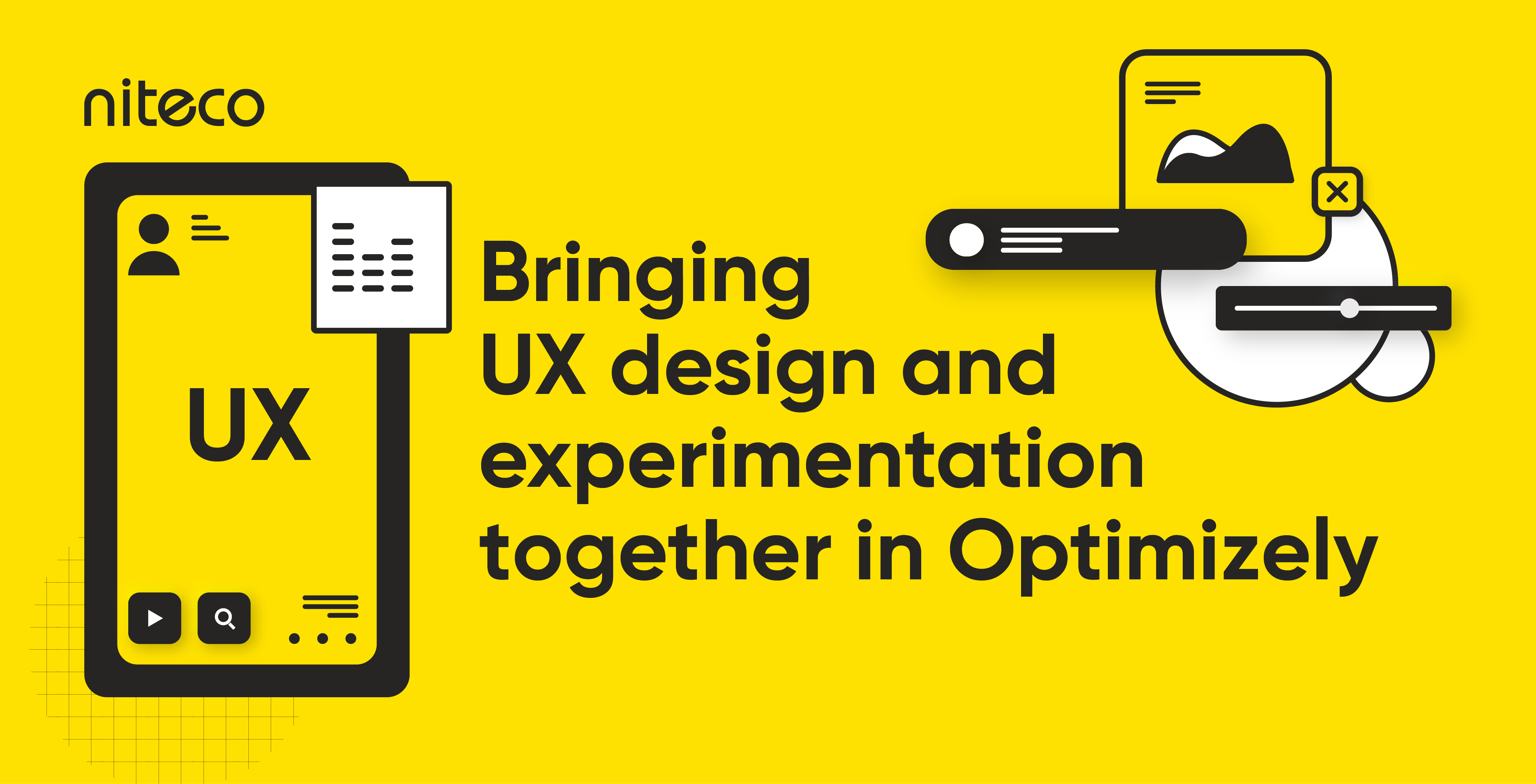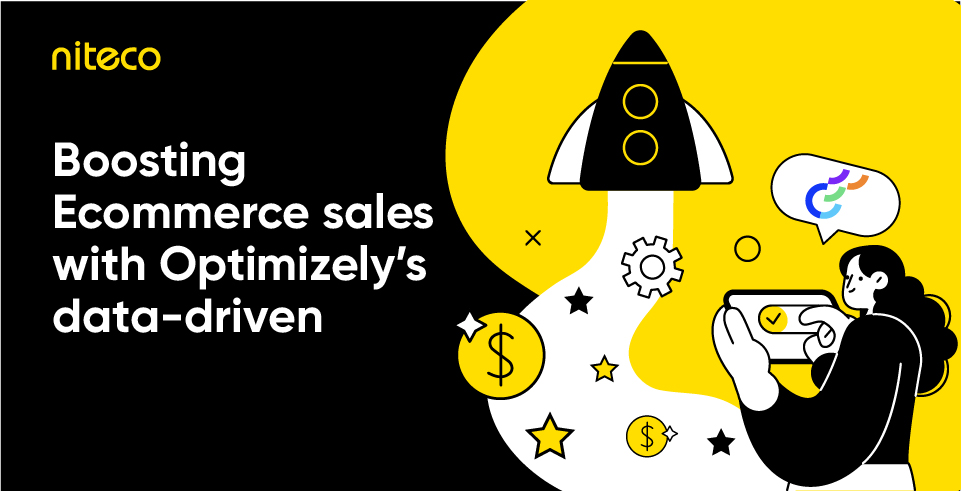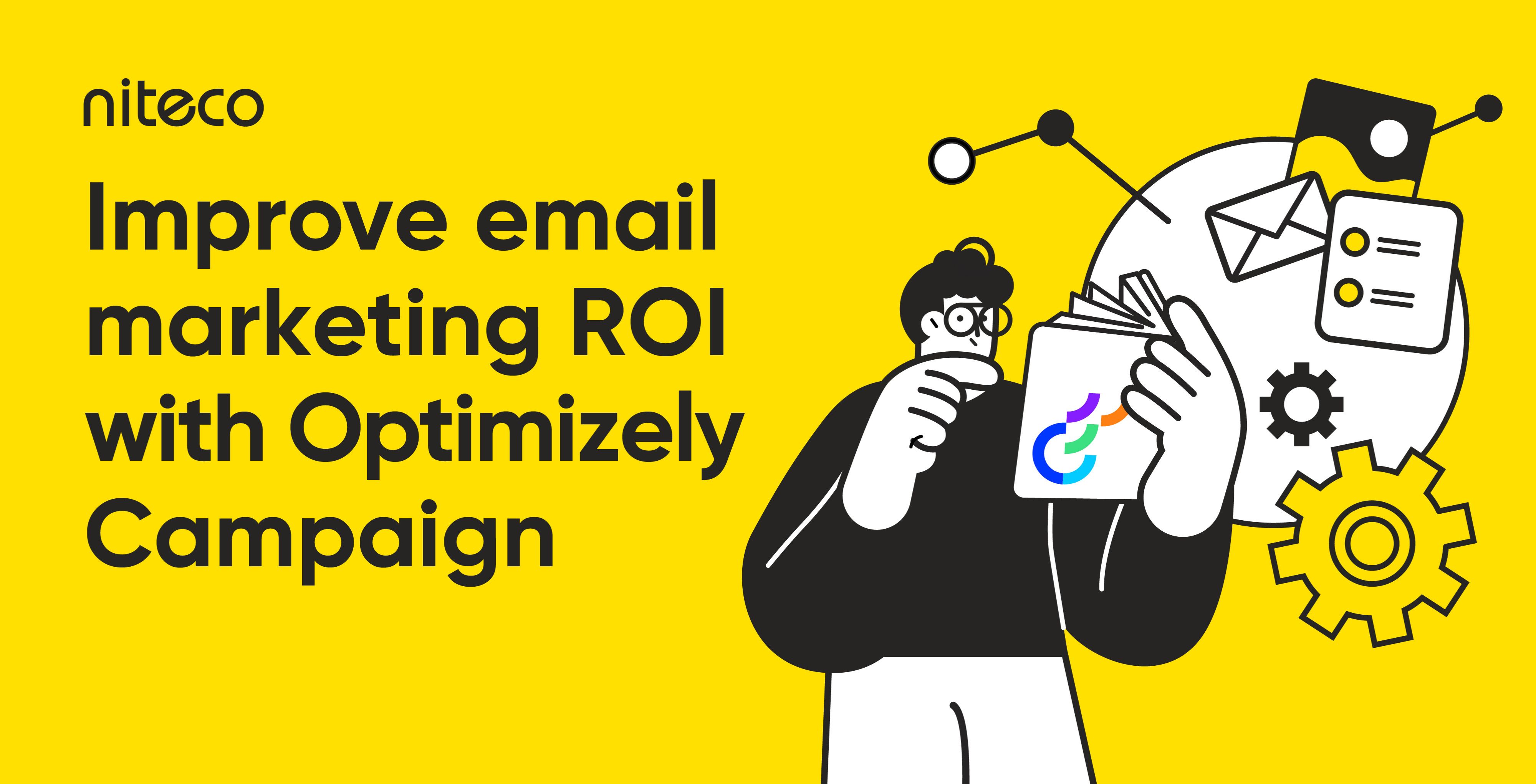User experience (UX) issues and flawed experimentation setups inherited from previous agencies can significantly slow down your digital growth. According to a research from Baymard Institute, poor user experiences could cause up to 88% of visitors not to return to a website. So, how can your organization effectively address inherited UX and experimentation issues?
Integrating UX design principles into Optimizely Web Experimentation allows your team to identify, address, and continuously improve the user experience with precision. By leveraging Optimizely UX testing, you’ll uncover insights that drive conversions, enhance user satisfaction, and significantly boost your ROI.
Let’s dive in and explore how combining UX design and experimentation in Optimizely can transform your digital performance with the largest certified Optimizely partner.

Addressing inherited UX and experimentation issues
When organizations inherit UX designs and experimentation setups, they often inherit a host of challenges impacting user experiences, experiment reliability, and overall website performance.
- Unclear experiment objectives: Experiments conducted without clearly defined hypotheses or business objectives, leading to ambiguous or irrelevant results.
- Faulty or inefficient experiment setup: Technical errors, poorly executed A/B testing methodologies, or insufficient sample sizes causing unreliable data and misleading conclusions.
- Neglected user experience issues: Experiments designed without consideration for UX principles or user insights, creating user confusion, frustration, and negative impacts on engagement metrics.
These inherited challenges can seriously hinder your site's ability to deliver effective user experiences and gather meaningful insights from testing efforts.
Understanding Optimizely Web Experimentation for better results
In today’s digital landscape, delivering superior user experiences isn’t a luxury, it’s an expectation. Achieving continuous improvements requires reliable, user-centric experimentation methods. This is precisely where Optimizely web experimentation becomes invaluable.
What is Optimizely Web Experimentation?
Optimizely web experimentation is a powerful, user-friendly platform designed to help businesses create, launch, and analyze digital experiments. Its intuitive framework empowers teams to confidently test hypotheses and gather insightful, data-backed results.
Key capabilities of Optimizely’s experimentation platform include:
- Easy experiment setup: Quickly launch and monitor web experiments, streamlining your testing workflows.
- Personalized targeting: Precisely segment users based on demographics, behaviors, and interactions for more meaningful test outcomes.
- Real-time analytics: Immediate access to data and results, allowing for swift and informed decision-making.
- Integration flexibility: Seamlessly integrate with analytics platforms (e.g., Google Analytics) and UX tools (e.g., Hotjar) for comprehensive user insights.
Facilitating effective A/B testing and multivariate testing
Optimizely enables two essential experiment types: A/B testing and multivariate testing, which help you uncover exactly which design and content variations resonate best with your users:
| A/B testing | Multivariate testing |
| Quickly test multiple variations of webpages or UX elements by dividing traffic among different versions. This method allows clear comparisons and highlights the most effective variant. | Test multiple UX and content elements simultaneously to discover the most impactful combinations, ideal for comprehensive optimization initiatives. |
Leveraging our expertise in Optimizely experimentation, we supported Electrolux, one of the world’s leading home appliance brands, to optimize their digital experience. Through strategic A/B testing and continuous UX improvements implemented in Optimizely, we delivered remarkable results - a 385% increase CVR across specific markets within two years and an impressive 11x ROI. Check out the success story with Electrolux here.
Curious about how we achieved these outstanding results? Keep reading to learn more about our proven experimentation approach and how Conversion Rate Optimization (CRO) can similarly transform your business performance.
Benefits of Optimizely for continuous UX improvement
Leveraging Optimizely Web Experimentation for ongoing UX improvement provides clear, measurable benefits:
- Data-driven decisions: Continuously refine user experiences using reliable, real-time data rather than intuition or guesswork.
- Enhanced sser engagement: Rapidly identify and resolve friction points, resulting in greater satisfaction and lower bounce rates.
- Improved conversion rates and ROI: By systematically identifying successful UX elements through experimentation, businesses boost conversions and revenue performance.
- Efficient experimentation process: Automated testing capabilities save valuable time and resources, enabling your UX team to focus more on strategic, high-impact improvements.
Ultimately, utilizing Optimizely’s robust experimentation capabilities empowers your team to iteratively and effectively optimize UX, driving consistent business growth and exceptional digital experiences.
If you're ready to improve your own website’s performance, explore our Conversion Rate Optimization services and find out how we can help you turn more visitors into customers.
Best practices for integrating UX design with Optimizely Web Experimentation
To maximize the value of Optimizely web experimentation, aligning your UX design processes closely with your experimentation workflow is essential. Proper alignment enables faster, more reliable insights and superior digital experiences.
Follow these proven steps for effective alignment:
- Involve UX early and continuously: Engage UX professionals in the experiment planning phases, ensuring test variations are intuitive, user-friendly, and aligned with user needs.
- Integrate UX research into experiments: Clearly utilize data from user research, such as personas, journey maps, heatmaps, and previous Optimizely UX testing findings to inform precise, impactful hypotheses.
- Clearly document shared processes: Establish standardized experimentation processes and documentation clearly outlining UX and experimentation responsibilities, deliverables, and timelines.
Essential tools & methodologies:
- Collaboration tools: Utilize Figma, Miro, Jira, and Slack integrated into Optimizely workflows to streamline cross-functional communication.
- UX analytics rools: Leverage Hotjar, Crazy Egg, and UserTesting in conjunction with Optimizely for comprehensive UX analysis.
Collaboration tips:
- Hold regular joint UX and experimentation workshops to foster shared objectives.
- Encourage open communication and collaborative problem-solving.
- Continuously review and iterate on shared processes, using experimentation outcomes as feedback.
UX design vs experimentation in action: Success story
At Niteco, our experimentation strategists go beyond making the best practices above a standard practice - they turn it into a strategic advantage.
Before enhancing the mobile digital experience for a leading lingerie brand in Canada, they worked closely with both the UX and data teams to deeply understand customer pain points and behavioral patterns. This cross-functional collaboration grounded every hypothesis in real insights.
One key opportunity identified was improving the Add-to-Cart experience across both desktop and mobile through the Quick View feature - aimed at increasing the purchase rate.
Throughout the project, we leveraged a range of cutting-edge technologies, including Optimizely Experimentation, data analytics tools, UX design platforms, ensuring that every insight gathered was not only actionable but also directly tied to measurable impact and informed decision-making.
The result: A seamless experimentation process that turned research into revenue-driving experience improvements: 4.3% year-over-year increase in its sitewide add-to-cart rate, the share of add-to-cart actions starting directly from the mobile Product Listing Page rose by 14%, up from zero.
Stay tuned for the case study to come out!
Conclusion: Maximize results with Optimizely Web Experimentation and UX design
Integrating UX design into your Optimizely Web Experimentation strategy isn’t just beneficial, it’s essential for businesses aiming for sustained digital success. Addressing inherited UX and experimentation challenges through this unified approach ensures more reliable data, higher user retention, and improved ROI.
Your organization deserves digital experiences that are seamless, user-friendly, and strategically sound. By leveraging UX expertise combined with powerful Optimizely experiments, you'll effectively outperform competitors and delight customers consistently.
Ready to elevate your experimentation strategy and boost your digital ROI? Contact Niteco today to schedule a consultation, and let’s explore how we can help you achieve exceptional ROI with Optimizely.
FAQs About UX Design & Optimizely Web Experimentation
Optimizely Web Experimentation is a powerful platform for conducting A/B and multivariate testing to optimize websites and applications for improved user experiences.
UX design ensures that experiments address genuine user needs and behaviors, significantly increasing the likelihood of experiment success and actionable insights.
Integrating UX design and testing yields more accurate data, boosts user satisfaction and retention, and delivers stronger, more insightful business outcomes.
Absolutely. Conducting an audit of your existing setup combined with UX principles integration via Optimizely quickly resolves inherited problems and enhances your experimentation effectiveness.
to transform your business and drive results?



